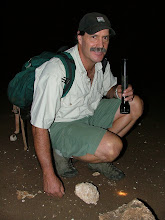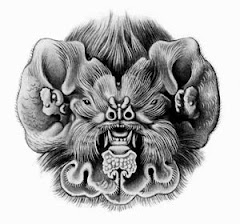
The Macal River Valley is riddled with cave systems due to the karst geology found throughout Belize and the greater Yucatan region. A Meteor which struck the earth, near the Yucatan, put an end to the dinosaurs and caused a colossal geological event which allowed the creation of thousands of caves throughout Central America. During the Maya reign, theses caves gave them access to the underworld and to their Gods and Deities that resided there. The evidence has shown that the Maya used these caves from the Early Preclassic, 1400-900 BC, until the Postclassic, mid 1500’s. Now the caves are covered by thick jungle growth, and Archeologists of today along with the indigenous people are now rediscovering a few of these sacred places since the Maya used them long ago.
The caves filled with natural formations, while beautiful to the modern visitor, were of great importance to the Maya in that they were places for rituals. Incense burning, bloodletting, and sacrifice, were some of the methods used in order to connect with the gods. These rituals would bring rain, bountiful crops of corn, and visions of the future. Lit with torches, they carved formations, created sculptures, constructed terraces, and paths through these vast chambers… and what more? As modern man visiting these sites we know so little. As you retrace the footsteps of the Maya you’ll hear what we have learned from the Archeologists that have worked and studied in these caves. While there are many facts that can be shared, there is much left to speculation. In these vast caverns many areas remain unexplored, waiting for discovery.

Actun Halal, (Dart Cave) is considered a shelter, as daylight reaches into the one room cavern from the two entrances at each end. Archeologists have studied and documented this cave for years, mapping, excavating, illustrating and photographing the various formations. While much is known about the uses of caves, this shelter cave has raised many questions. What is known is that the Mayan people used this sacred place extensively, and modified the formations, perhaps into faces, perhaps to signify gods and levels of the underworld.
Actun Halal has also shown evidence that Late Archaic people, (pre Maya-4400B.C.E.) used this cave, perhaps even living here.
Swallows circle overhead, and seeds litter the floor left by small mammals. Each visit is made in anticipation of discovering something new.
Actun Chapat (Centipede Cave) remains a cave without a known ending. Two known entrances, and several thousand feet of passage is riddled with pottery shards, modified cave formations, terraces, and human bones.
A lake with blind catfish, crabs, with bat’s flying overhead…a possum seen walking on a ledge 100 feet from the floor…An extremely diverse and dynamic cave that flooded in October of 2008 and perhaps not for 100 years before that. Chapat is a dynamic cave, still evolving and with the changes more evidence of the Mayas is brought to the surface, and other evidence disappears. Two wooded artifacts were discovered, a fragment of a torch and the back of a pyrite mirror, infant burials, two polychrome vessels brought from Central Mexico for ritual; a recent discovery which may turn out to be a mass burial…more remains to be discovered.
Actun Son Of Chapat
This cave is located next to Halal, and is a cave that was used extensively by the Maya. In the entrance there are hundreds of small pottery shards which have been deposited from the floods that still come through this cave on a yearly basis. This cave is believed to connect with Chapat although the passage is still unexplored and unknown. This cave has not been fully explored by archeologists so there is still a great deal of speculation about the use of this cave.
These caves are rarely visited and presently not well known. Located on Private Property, approximately 6 miles from Succotz Village, the landowner is preserving the land along with the feeling he first had when he first visited the caves, and share it with a few select guests. The guides have been trained and have worked with the archeologists, so are extremely knowledgable about the cave and the history of the cave. The owner of the land and owner of the tour company being one and the same is 100% committed to the land, the sites, along with providing the best experience available. Every tour is a custom tour, and whatever your interests are, be it flora, fauna, archeology, or cave geology, our guides will be sure to provide you with as much information and adventure as you desire.
The caves filled with natural formations, while beautiful to the modern visitor, were of great importance to the Maya in that they were places for rituals. Incense burning, bloodletting, and sacrifice, were some of the methods used in order to connect with the gods. These rituals would bring rain, bountiful crops of corn, and visions of the future. Lit with torches, they carved formations, created sculptures, constructed terraces, and paths through these vast chambers… and what more? As modern man visiting these sites we know so little. As you retrace the footsteps of the Maya you’ll hear what we have learned from the Archeologists that have worked and studied in these caves. While there are many facts that can be shared, there is much left to speculation. In these vast caverns many areas remain unexplored, waiting for discovery.

Actun Halal, (Dart Cave) is considered a shelter, as daylight reaches into the one room cavern from the two entrances at each end. Archeologists have studied and documented this cave for years, mapping, excavating, illustrating and photographing the various formations. While much is known about the uses of caves, this shelter cave has raised many questions. What is known is that the Mayan people used this sacred place extensively, and modified the formations, perhaps into faces, perhaps to signify gods and levels of the underworld.
Actun Halal has also shown evidence that Late Archaic people, (pre Maya-4400B.C.E.) used this cave, perhaps even living here.
Swallows circle overhead, and seeds litter the floor left by small mammals. Each visit is made in anticipation of discovering something new.

Actun Chapat (Centipede Cave) remains a cave without a known ending. Two known entrances, and several thousand feet of passage is riddled with pottery shards, modified cave formations, terraces, and human bones.
A lake with blind catfish, crabs, with bat’s flying overhead…a possum seen walking on a ledge 100 feet from the floor…An extremely diverse and dynamic cave that flooded in October of 2008 and perhaps not for 100 years before that. Chapat is a dynamic cave, still evolving and with the changes more evidence of the Mayas is brought to the surface, and other evidence disappears. Two wooded artifacts were discovered, a fragment of a torch and the back of a pyrite mirror, infant burials, two polychrome vessels brought from Central Mexico for ritual; a recent discovery which may turn out to be a mass burial…more remains to be discovered.
Actun Son Of Chapat
This cave is located next to Halal, and is a cave that was used extensively by the Maya. In the entrance there are hundreds of small pottery shards which have been deposited from the floods that still come through this cave on a yearly basis. This cave is believed to connect with Chapat although the passage is still unexplored and unknown. This cave has not been fully explored by archeologists so there is still a great deal of speculation about the use of this cave.

These caves are rarely visited and presently not well known. Located on Private Property, approximately 6 miles from Succotz Village, the landowner is preserving the land along with the feeling he first had when he first visited the caves, and share it with a few select guests. The guides have been trained and have worked with the archeologists, so are extremely knowledgable about the cave and the history of the cave. The owner of the land and owner of the tour company being one and the same is 100% committed to the land, the sites, along with providing the best experience available. Every tour is a custom tour, and whatever your interests are, be it flora, fauna, archeology, or cave geology, our guides will be sure to provide you with as much information and adventure as you desire.



 Hiking through the cave today I found myself in a different state of mind.
Hiking through the cave today I found myself in a different state of mind.







